The fascinating world of bonsai
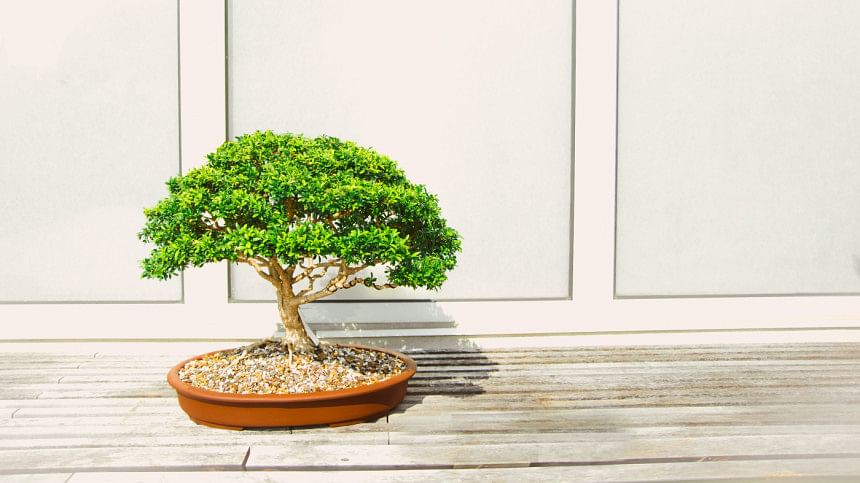
The word Bonsai (often misspelled as Bonzai or Banzai) is a Japanese term which literally translates to 'planted in a container.' This particular art form redeveloped under the influence of the Japanese Zen Buddhism. However, the origin of Bonsai dates back to ancient Egypt, and its evidence found in China; who called it Penjing.
Let us dive deep into this world of cultivation of miniature trees. Also known as 'dwarf trees' the art of growing a Bonsai took birth in people's mind because the ancient Chinese deemed a means of accessing the magical properties held within the replicated subject. The first rudimentary display of this ornamental vegetation can be found in the archaeological remains of a 2,000-year-old Han dynasty tomb in China.
The art of Bonsai entered Japan as religious souvenirs and by the Edo period (1603-1867), potting small trees became a pastime for the wealthy, with an annual show held in Kyoto showcasing traditional dwarf potted plants.
Even though Bonsai started as a symbol of wealth and something only people with a lot of free time on their hands can do; after World War II, the culture of Japan expanded and with it, expanded the cultivation or 'growing' of Bonsais. "It is the slowest sculpture in the world, and there is, at times, doubt as to which is being sculpted, man or tree," said Theodore Sturgeon, American fiction and horror writer, in his book Slow Sculpture.
This speaks volumes about the growing of Bonsai. The factor that sets aside this form of art apart from all other forms is their history; their requirement of immense discipline. Hence, the pride and seriousness of a Bonsai grower is like no other.
Bonsai is indeed not just a plant, but a tree. It is necessary for them to be treated as such by using a different growing method; details as small as the beginning of seedlings to the shape it will take depending on the cultivators' techniques. Bonsai can easily live beyond 100 years. Bonsais also do not bear fruit, but they are known to bear a variety of flowers.
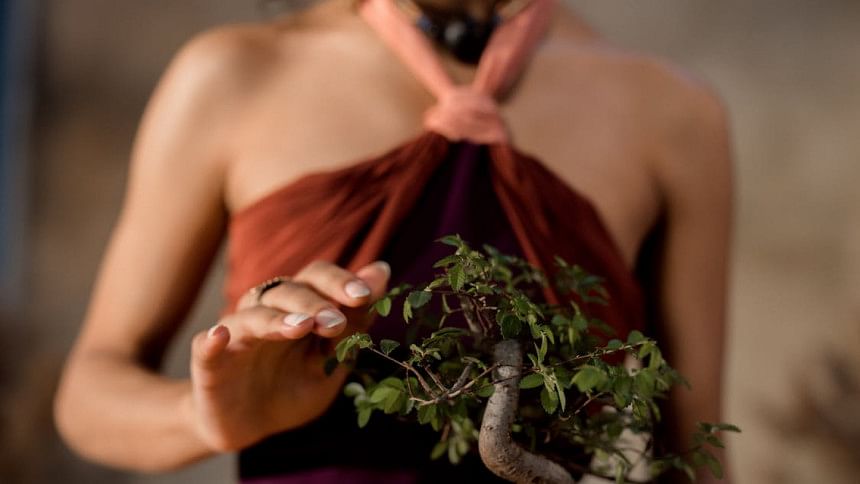
The beginnings of the Bonsai all start with a plant source that is aged. The plant source will need to be of a significant amount of time, in a sense "older." This source requires a specific soil, and a pot in smaller size for the growing process to begin. While growing the Bonsai, consider these points pivotal to a successful Bonsai.
Since it is an art form, the cultivator has freedom over a handful of things; such as the Bonsai's appearance, growth and formation. As the cultivator, they can bring their ideal vision of the Bonsai to life following these few factors of care.
Trimming Leaves: This involves removing both needles and leaves found on the Bonsai's branches and trunk.
Wire: This technique has its own vital role in growing a Bonsai. The cultivator uses wires in the direction of the branches and trunk to determine which formation the tree will take.
Clamps: Instruments as such are used to give the cultivator control over the growth of the Bonsai.
Removal of Leaves: Known as defoliation, this technique is used to cause the dwarfing of the Bonsai foliage. It is used particularly on Bonsais that shed.
Bonsai Pruning: It is basically the caring for the Bonsai; roots, tree trunk and branches.
Like the quote from Theodore Sturgeon, the growing of Bonsai is a reflection of the artist and their patience. The philosophy of Zen seen in the tasks required in Bonsai art are Mono no Aware and Wabi Sabi. A sense of awareness for things that are both fragile and not permanent describes the philosophy of Mono no Aware. Accepting a beauty that is both of no perfection, or not complete, as well as imperfect, is the philosophy of Wabi Sabi. These are the philosophies the grower of Bonsai wants their art to represent.
The philosophies have, with time, been shaped into rules and guidelines. It is not always guaranteed that with guidelines, the Bonsai will reach its maximum potential, but it will allow the cultivator to keep track of what needs to change in future attempts.
Miniature Size: The Bonsai has to fit appropriately into the pot.
Proportioning: The Bonsai should be proportional to the regular tree.
Asymmetrical: Like in nature, trees are not symmetrical, neither should the Bonsai.
Intervention Signs: The grower will want to be absolutely certain that they do not leave any sort of scarring.
Moving: A Bonsai should show feeling of poignancy and move the audience with its beauty, as no two Bonsais are alike.
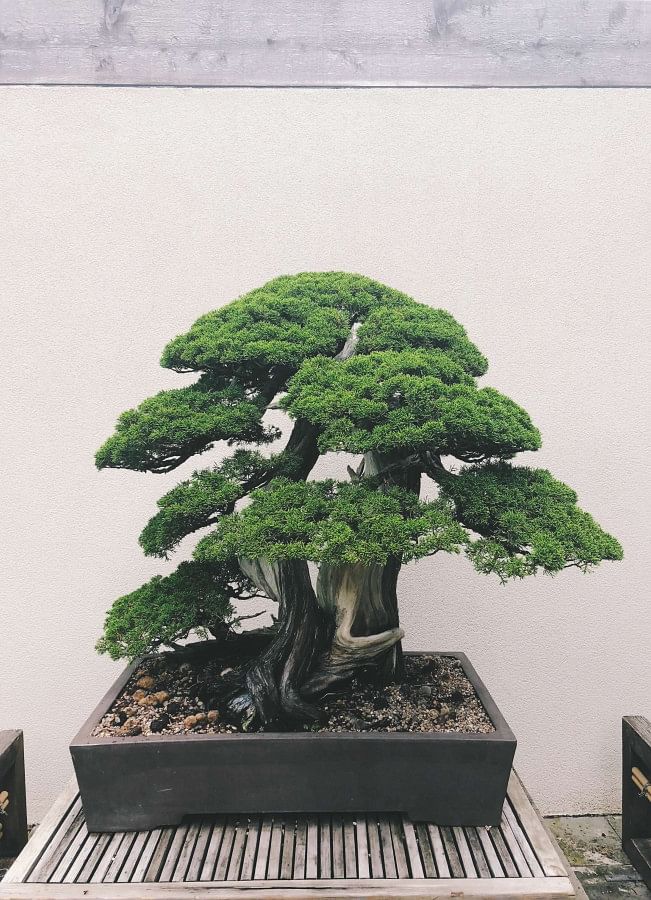
Displaying of Bonsais are just as crucial as growing them. After all the hard work that has been put into growing it, the cultivator would want to keep in mind the best possible way to display their trees. It can be displayed indoors or outdoors, depending on what aesthetics the grower wants to nod to. Lighting and cleanliness are other factors to keep in mind, since Bonsais are still a symbol of wealth and luxurious delight. Any unnecessary accessories and decorations are considered moot. These are some popular types of Bonsai display:
Formal: Upright and has a straight trunk.
Informal: Despite growing much like the formal type it still shows minimal curves.
Slanting: This type involves the Bonsai trunk being straight from the roots but slanting as soon as it is above ground.
Cascade or Semi-Cascade: Considered the most elegant form of Bonsai, these two styles represent trees that cascade over the mountain sides; specifically, the top bending below the pots base.
Raft: The trunk is slanted and twisted.
Literati: Minimal branches.
Forest: Several trees grouped together to represent a miniature forest.
Some other notable but less common styles of Bonsai include Driftwood, Weeping, Split-Trunk and Windswept styles.
The Bonsai art form steps far beyond just hard work and time; it regulates your discipline and drive to keep on taking care of a tree. The growing of bonsai has been compared to meditation. Discipline of Bonsai and the education behind its cultural history makes one very likely to find themselves deep into the art form, which stems from centuries of tradition across Asia.
For those of you who are looking forward to the world of Bonsai and creating your own signature style can learn a few headers from artists like Masahiko Kimura, Saburo Kato, John Y Naka, Harry Hirao, and Kunio Kobayashi, as they are some of the best Bonsai artists of all time. They had significantly helped spread the art form of bonsai around the world. It is said, just as the Bonsai grows and reaches its maximum potential, so does the artist.

 For all latest news, follow The Daily Star's Google News channel.
For all latest news, follow The Daily Star's Google News channel. 

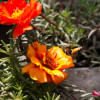
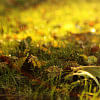

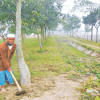



Comments